After bagging 25 goals for Newport County in the EFL League Two during the 2021/22 season, striker Dom Telford announced that he will not be renewing his contract with the Exiles. Inevitably, this was the catalyst for rumours and speculation of just who would secure his signature after the highly wanted forward. In what was something of a shock to many EFL fans, Telford signed for League Two side Crawley Town, who finished one place below Newport in the most recent campaign.
This scout report will provide a tactical analysis of Telford, and why the exciting striker could be a very important signing for Crawley. There will also be an analysis of his key attributes as well as data to be drip-fed throughout the report, with a further look at how his play style complimented the tactics at Newport County.
Profile
25-year-old Dom Telford came through the ranks at Stoke City but only ever made an impact in their U23 squad. Spells at Blackpool, Bristol Rovers, Bury, and Plymouth Argyle weren’t particularly fruitful for the striker, registering a total of 25 goals in 134 appearances. However, there was always potential in the way he played, and it seems we are now seeing Telford begin to fulfil this, which is perhaps why many were perplexed at his signing for another League Two club.
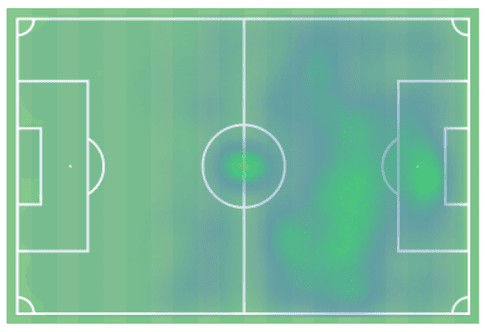
At 175 cm, the Burnley-born striker relies on his movement and pace rather than his height, finding spaces to work in and unsettle the opposition backline. As you can see from his heat map above, he rarely operates in wide areas in the final third – when his team have possession in those areas, Telford is already taking up a position in the box in anticipation of a delivery. The heat map does give us a clearer idea of how he supports his teammates though as he will often drop deeper into midfield zones to help the progress of an attack.
A dangerous presence in the final third
The first, and arguably the biggest reason for so many clubs chasing Telford this summer is his goalscoring prowess. His ability to turn half-chances into key moments and recognise when he can inflict damage to the opposition is something that every club is chasing. In the 2021/22 campaign, the striker showed a high level of ability in areas such as movement, agility, pace, and finishing, all combining to make Telford the player he was. Below is an analysis of those aforementioned attributes and how they could benefit the tactics of his new club, Crawley.
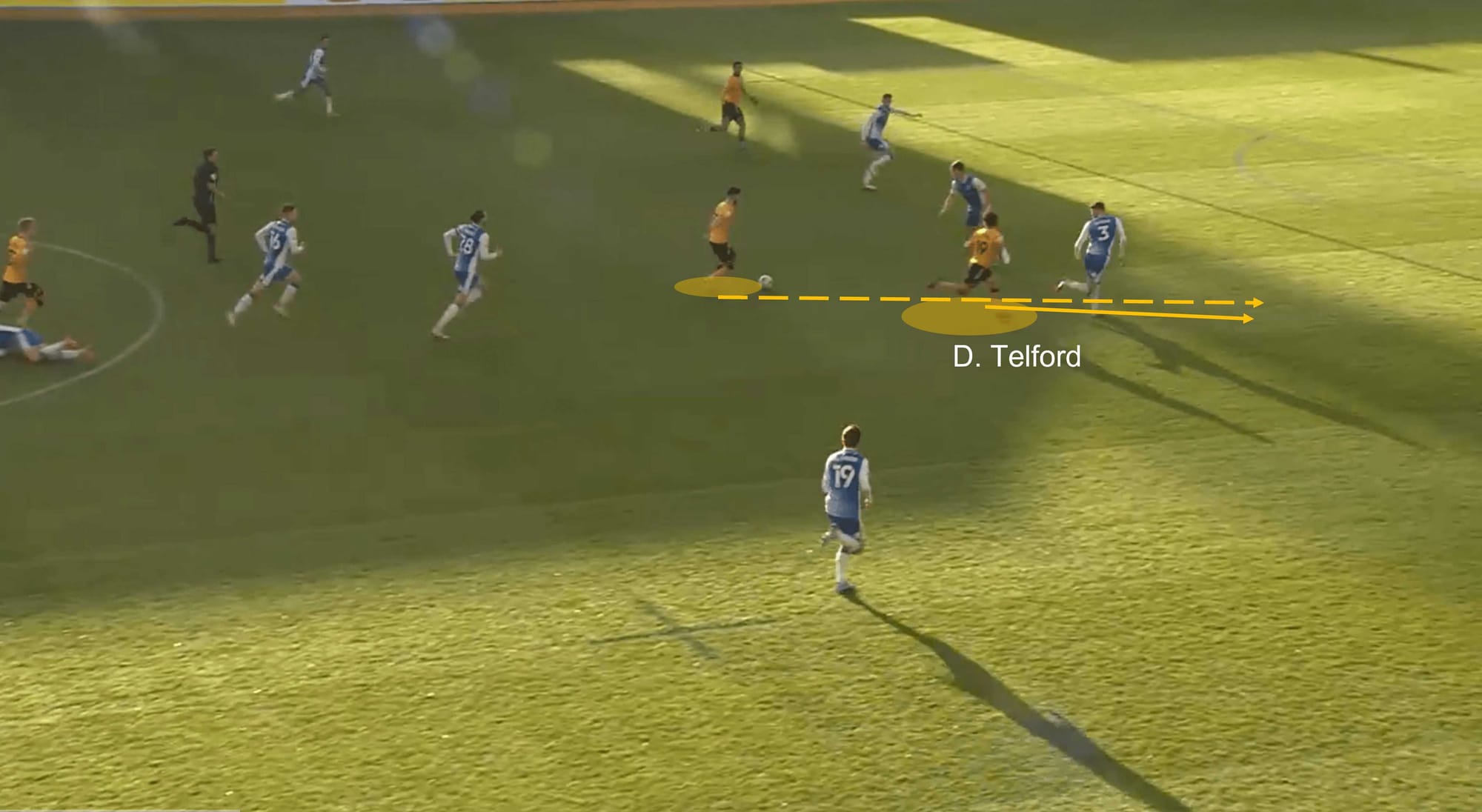
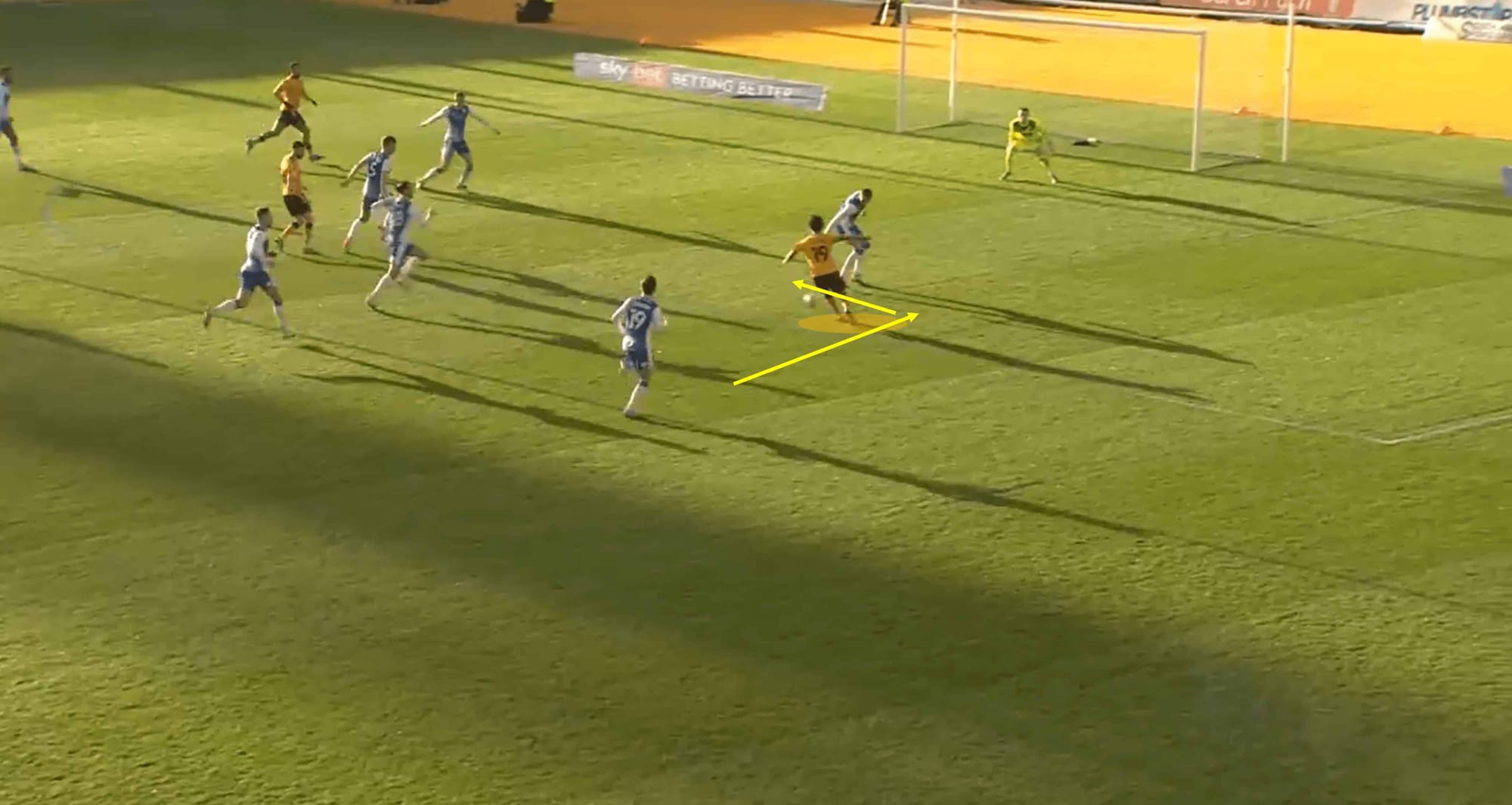
This first two-part analysis shows Newport launching an attack following during a transition, meaning they can hit their opponents with pace and look to exploit a lack of positioning and organisation. It begins with Telford’s midfield teammate driving forward with the ball, with the striker just holding his run until the right moment. Holding his run allows his teammate to carry the ball further forward, meaning Telford can receive the ball closer to the goal. As he makes his darting run into space, the pass is fizzed into his path. Telford shows good composure to collect the ball well, before facing up to the opposition defender in a one-vs-one situation. With a drop of the shoulder and good agility, Telford cuts inside onto his stronger left foot before unleashing a shot into the net.
During this season, Telford averaged 3.71 touches in the penalty box each match – for a mid-table side who struggled to find goals other than Telford’s, that stat demonstrates his importance to the side, but also his impact on the game, shown in the analysis above: he proved he possesses good dribbling to get into a strong position inside the box to set himself up for a shot which resulted in a goal.
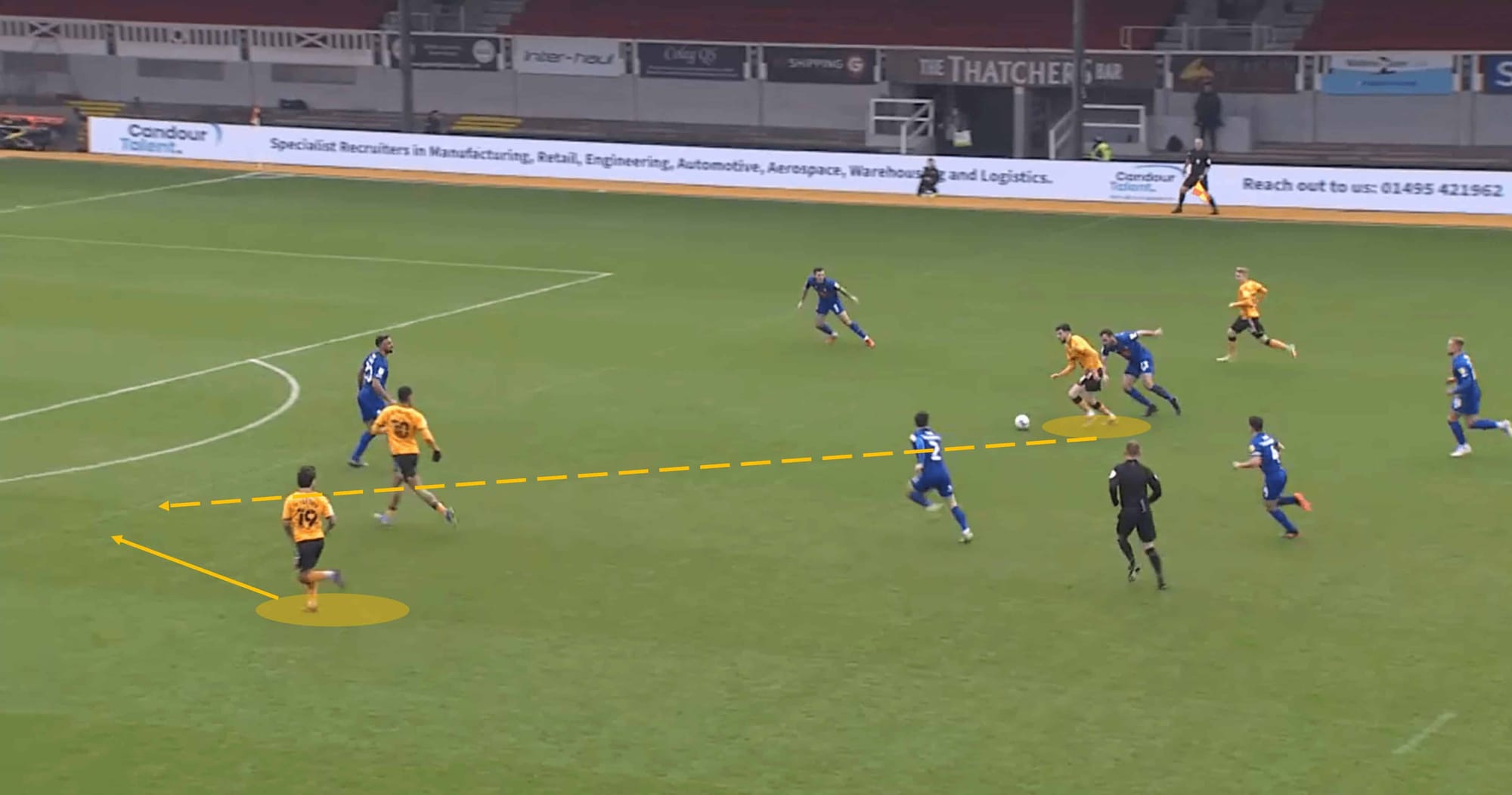
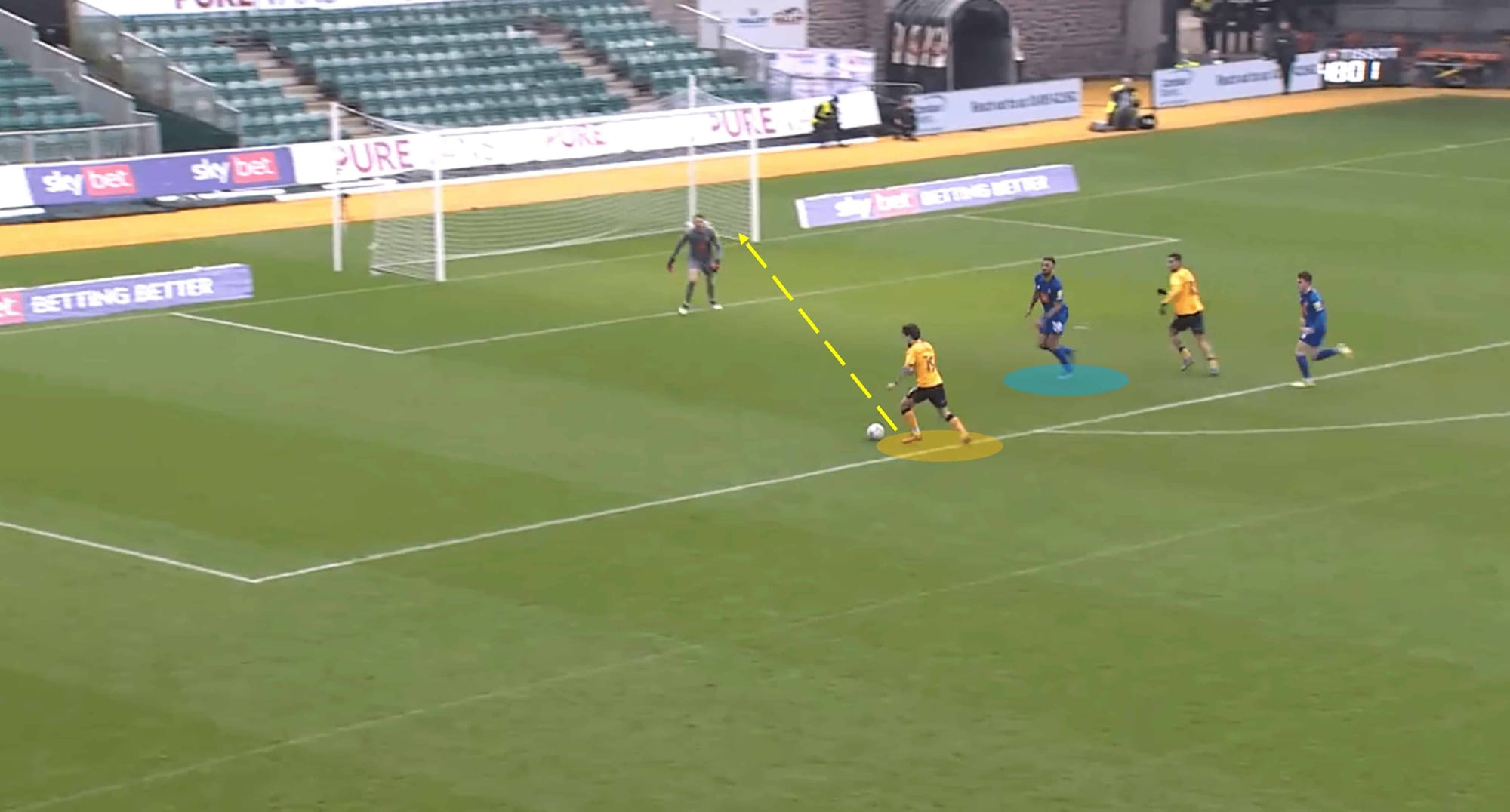
Here is another example of Dom Telford making dangerous runs and exploiting gaps in an opposition defence. Similar to the previous example, the midfielder is surging forward through the middle with the ball having narrowly beaten his midfield counterpart. Notice Telford’s positioning in the first image – practically unnoticed by the opponents’ backline and the Newport midfielder recognises this.
The pass is played, and Telford’s first touch is brilliant, setting him up perfectly for a shot on goal. His shot is fizzed past the keeper into the far bottom corner. Simple actions but executed accurately. As we mentioned, Telford’s tally of 25 goals over the course of the campaign earned him the EFL League Two golden boot award, but when we dive deeper into some of his data, it tells us why. With an average of 2.83 shots per game and an average xG of 0.4, ‘clinical’ is the first word that comes to mind when describing this forward.
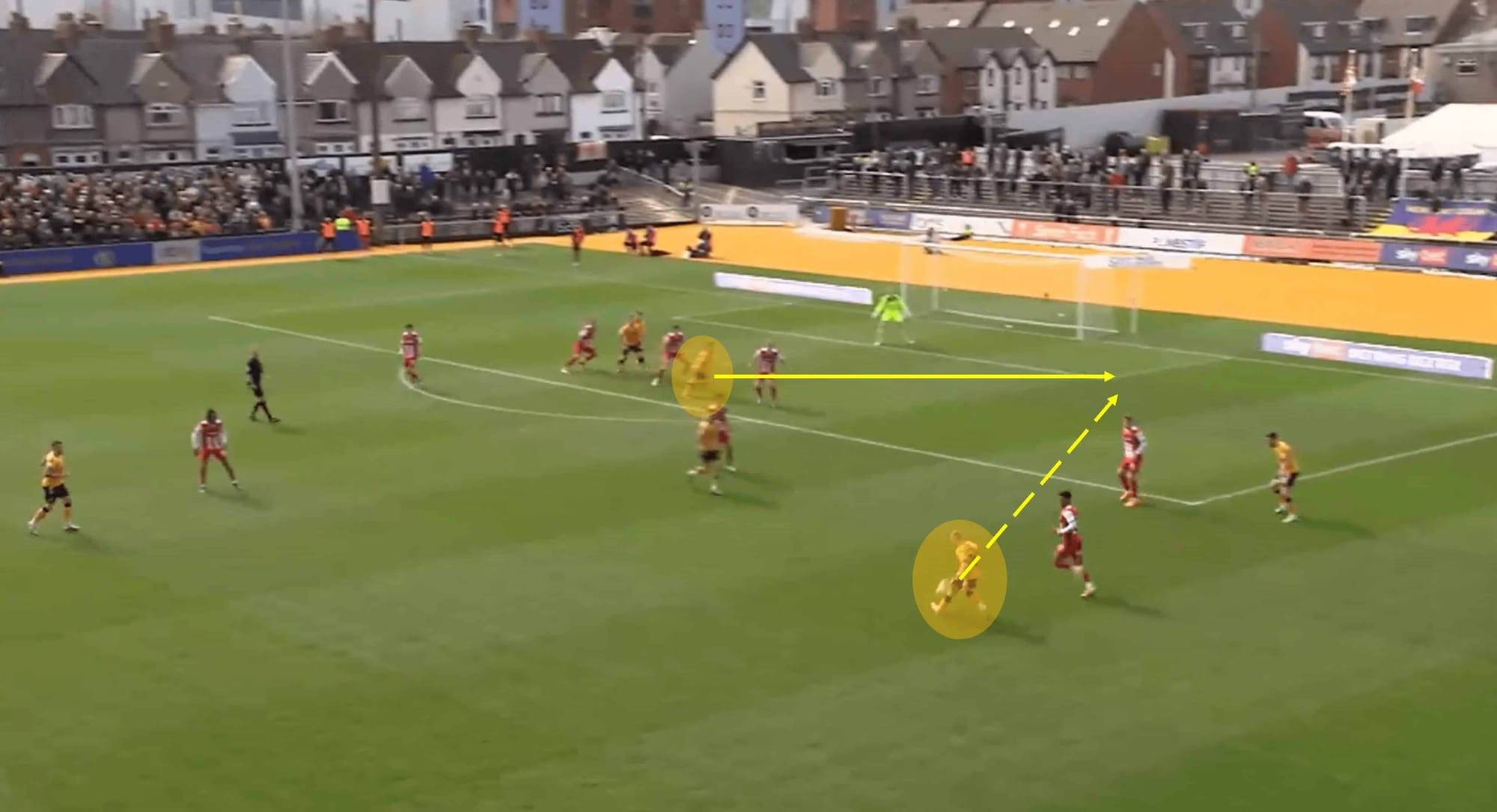
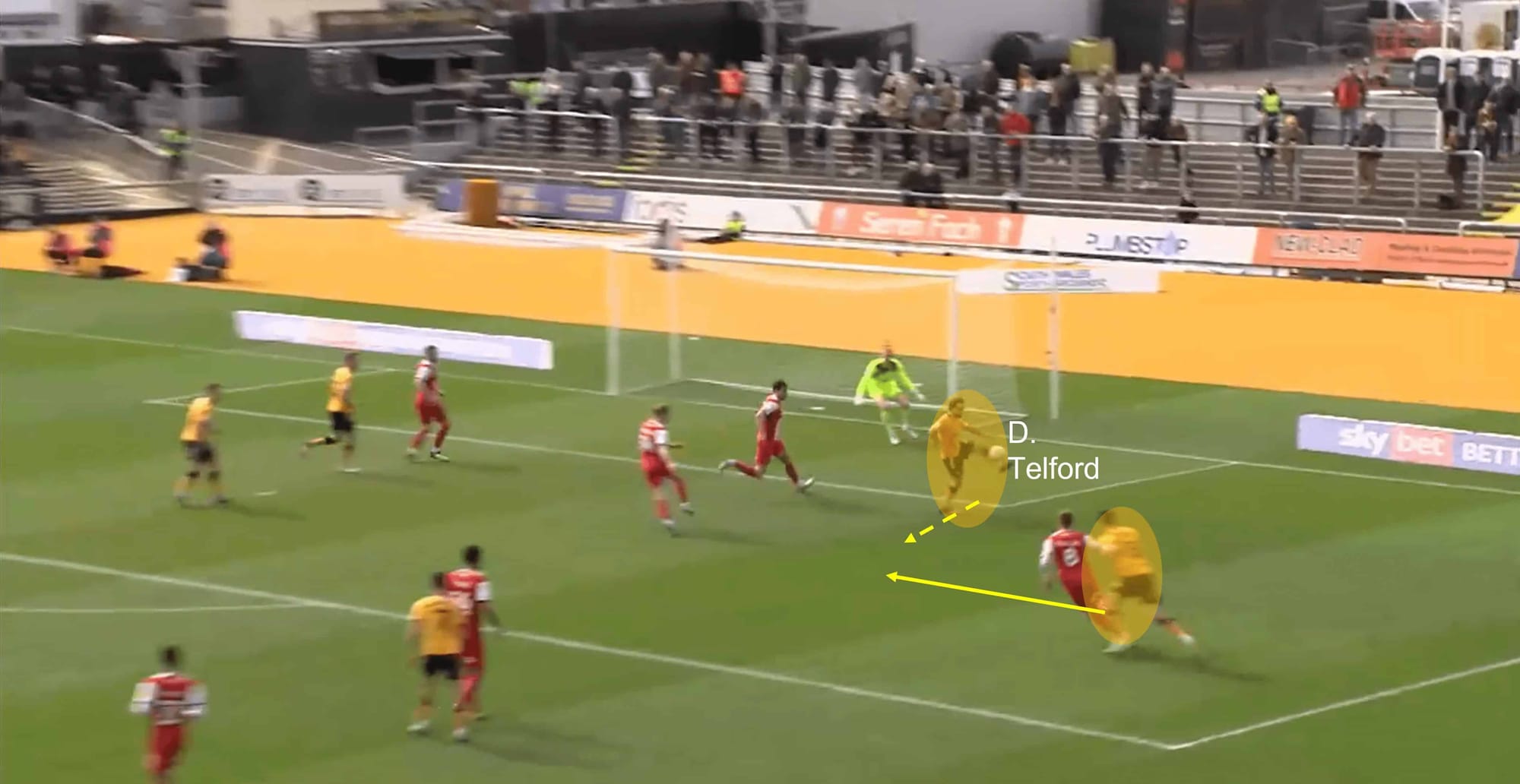
In this final analysis of his contributions in the final third, we see a combination of attributes like movement, anticipation, timing, vision, and passing from Telford. The first image shows Telford on the shoulder of the final defender. Both Telford and his teammate on the ball show great chemistry and tactical awareness as the pass is floated nicely into the path of Telford.
Knowing that the angle of his body positioning makes it difficult to pull off a shot that would pose any danger, Telford looked to turn from goal scorer into chance creator. He shows incredible skill to execute a first-time pass on the move with the ball off the ground, into the path of his teammate who made a clever inverted run.
With great vision and execution from Telford, his teammate just couldn’t get the ball from under his feet to cause any danger. Telford boasted a record of 0.67 shot assists for the last campaign – an indication that he possesses the creative quality to contribute to attacks in the box.
Assistance in midfield
Newport often deployed tactics and formations with two strikers, and Telford’s role would include link-up play with the midfield. His movement, agility, and ability to play in tight pockets of space make him a fit for the role. Below is the analysis of how Telford would typically operate in line with Newport’s tactics.
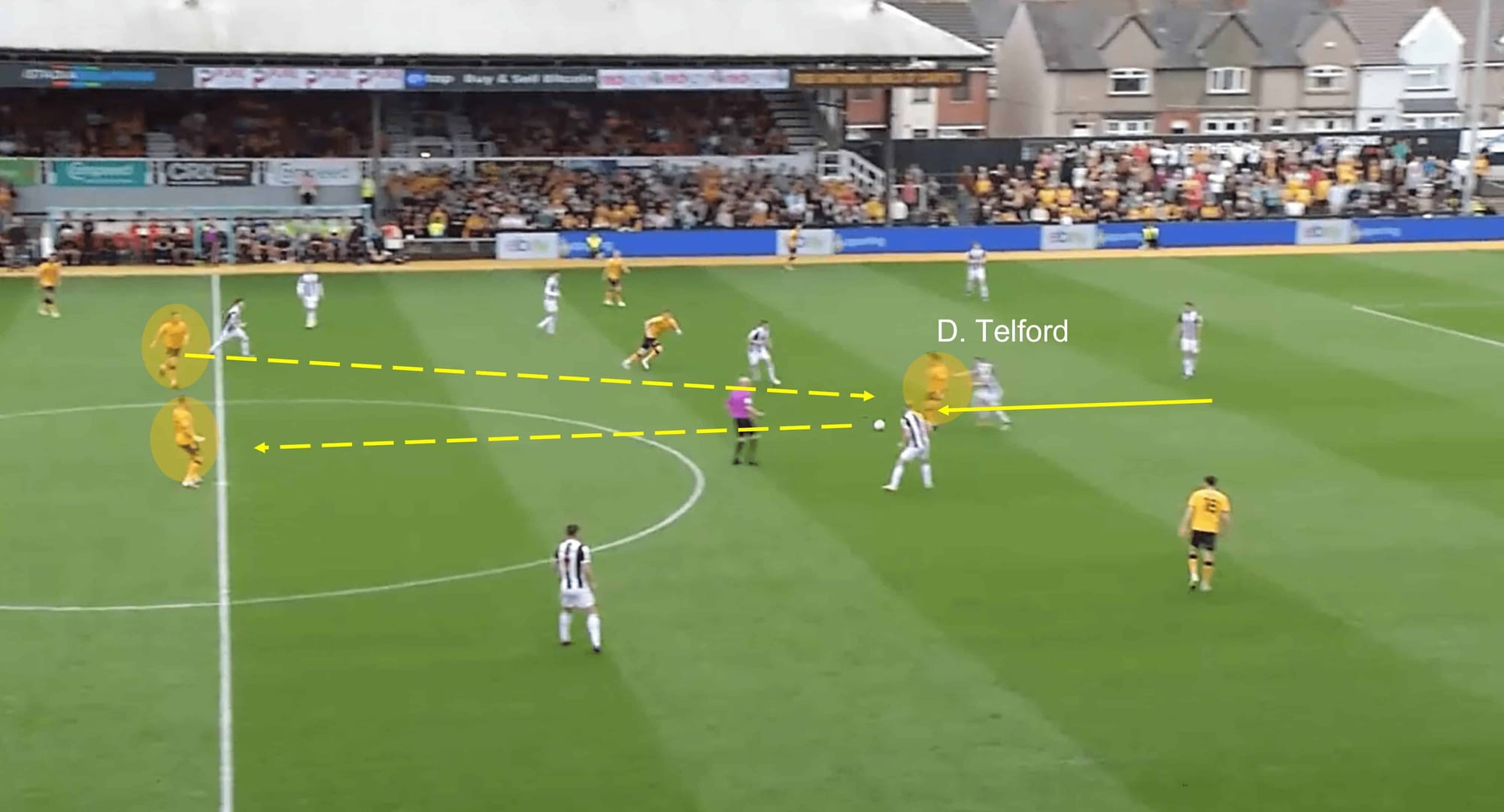
This first example shows Telford linking up the Newport centre-back as he looks to break the line and bypass a portion of the opposition midfield. Telford, who timed his run well from a higher position, was able to use his strength and body positioning to defend the ball from a challenge, before bouncing back a first-time pass to the highlighted teammate. This gave Newport the chance to carry their possession over to the right flank while forcing opposition players out of position in the process.
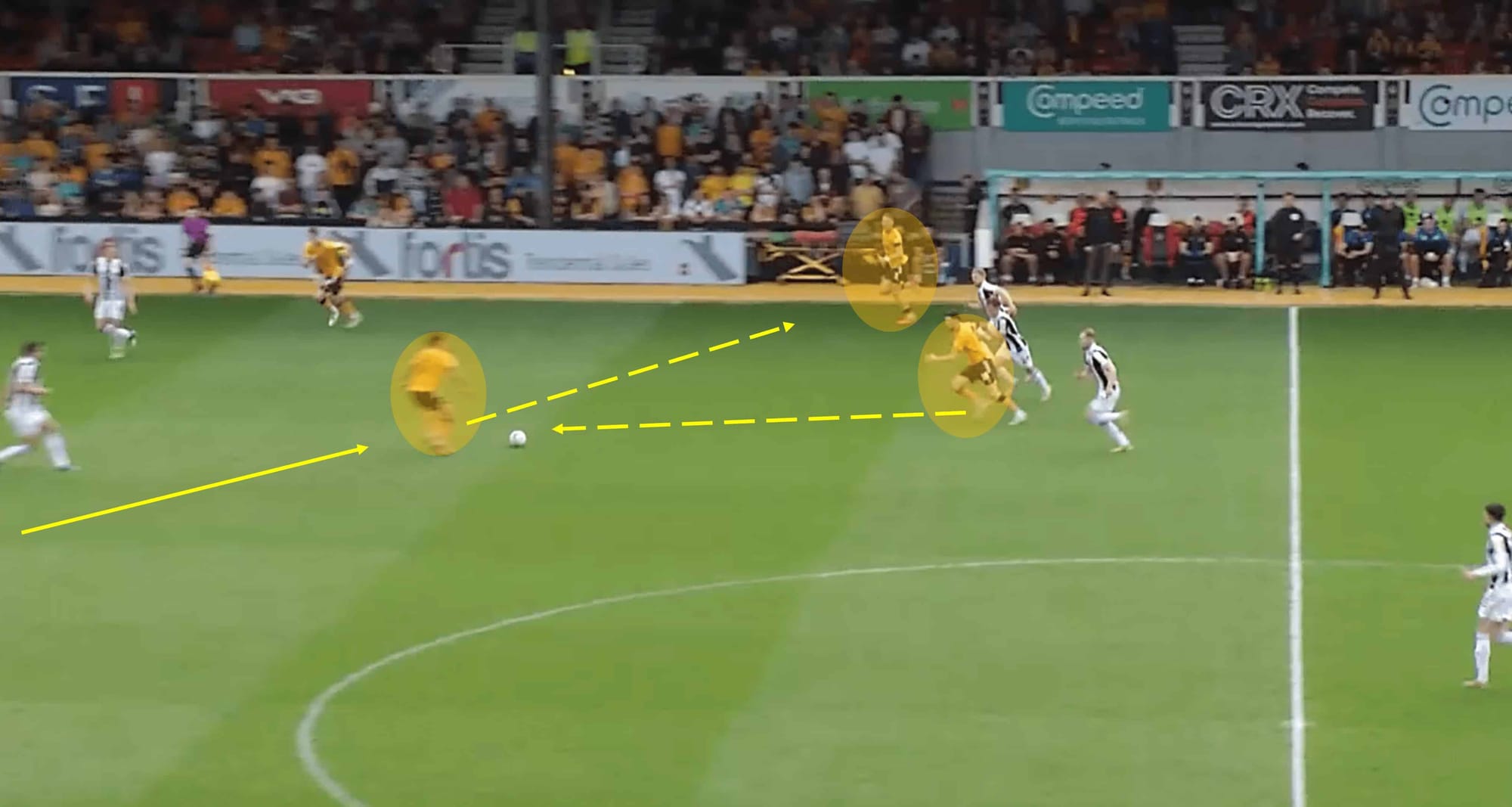
The second example of Telford dropping in deeper to be the link between the midfield and attack is not too dissimilar to the first, but still offers some interesting elements – such as his decision-making here. As the ball comes into him from the midfielder who had driven forward from his own half, there are really four options in total for Telford. He could’ve returned the ball back to the initial passer, played a pass into the winger furthest forward, or controlled the ball, turned, and ran towards goal himself. Instead, he opted for the full-back who was making a good supportive run – a good choice of pass from Telford as he was unmarked and had a decent amount of space ahead of him to work in.
What’s interesting in both examples, and in countless others, is that Telford does not look to control the ball and dribble forward himself. He prefers to involve himself in possession before getting forward again and allow the midfielders to create the chances. On average, he only attempts 2.83 dribbles per game, with a success rate of 43.3%. While these aren’t particularly poor numbers, they are numbers that suggest dribbling isn’t one of Telford’s best qualities. This could be part of the reason we rarely see him come deep to collect the ball and start running with it.
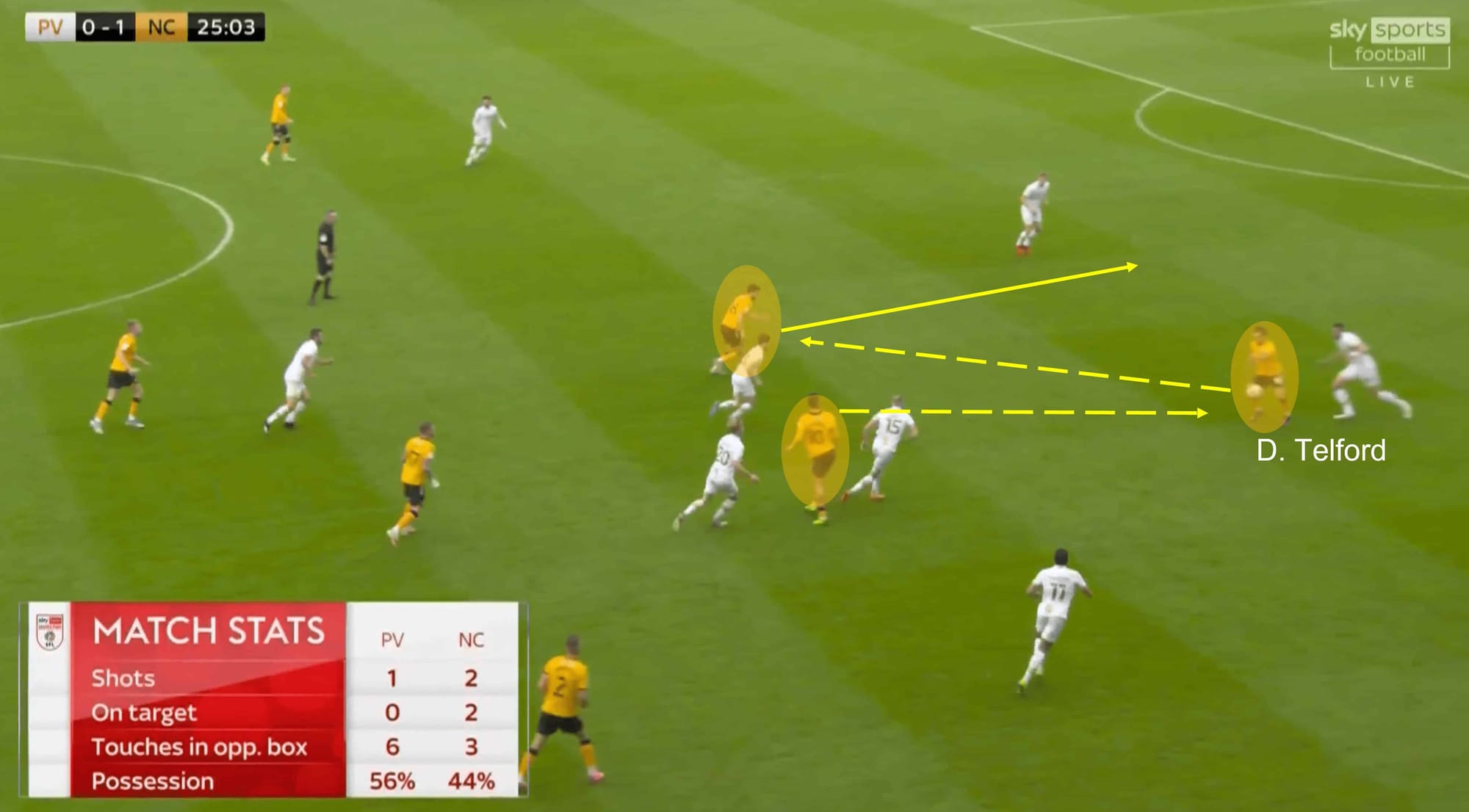
While this example shows Telford operating as Newport’s furthest man forward, his role in this phase of play is still to bring teammates into and act as a quick stepping stone in the attack. The ball is flicked onto him via a header from midfield, and he is forced to execute his move quickly thanks to the pressure from the opposition defender. After a sufficient first touch, he plays the bouncing ball into the path of his attacking teammate who has space in front of him and only one opposition defender to beat.
This is another example of Telford’s creativity, vision, and decision-making as he again lends his services to bring his teammates into the fold.
Conclusion
While many EFL fans may be shocked at Telford’s arrival at Crawley Town, they are also likely jealous – and rightly so. Dom Telford is yet to reach his prime years as a footballer and already looks to be one of the deadliest finishers in the EFL.
He offers that clinical aggressiveness that can often be the difference in vital games. His performances also show good tactical awareness, vision, movement, pace, and creativity which will allow him to slot into his new side’s tactical approach with ease. Crawley will be aware that they risk losing Telford at the end of the 2022/23 season if he bags the goals but they fail to gain promotion, although they must fancy their chances now after such an impressive acquisition.

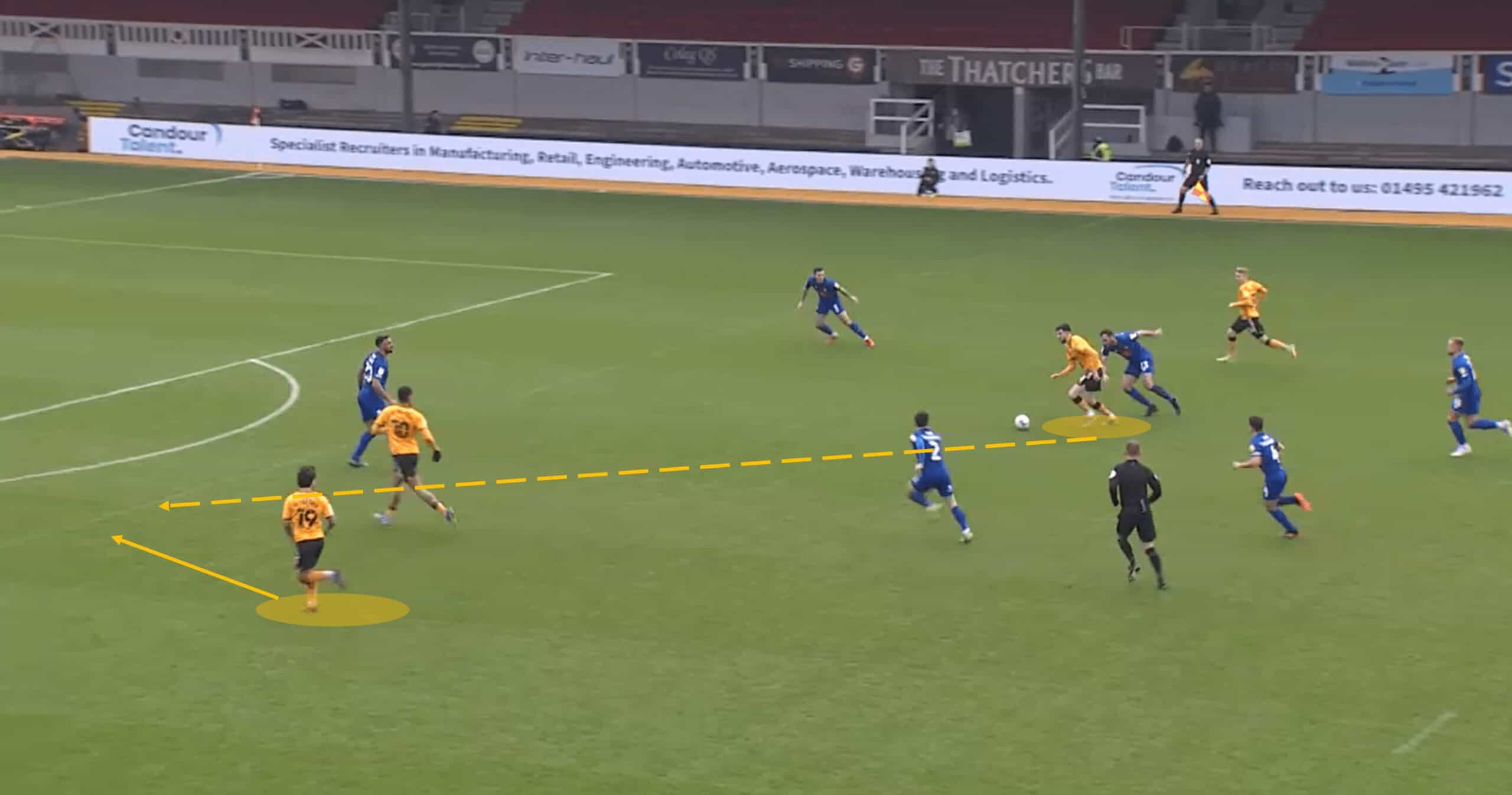




Comments